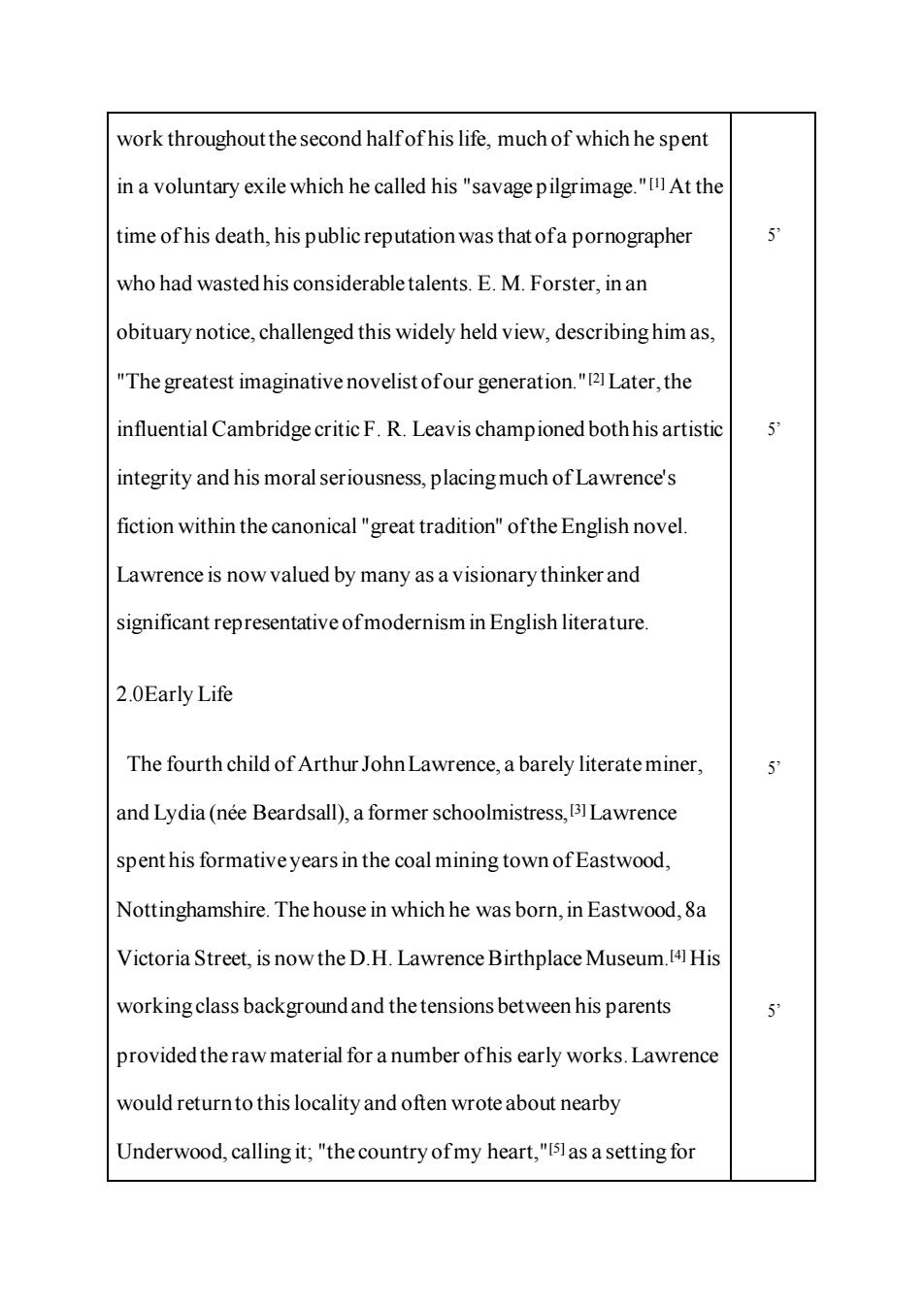正在加载图片...

work throughout the second halfofhis life,much of which he spent in a voluntary exile which he called his"savage pilgrimage.At the time ofhis death,his public reputation was that ofa pornographer 5 who had wastedhis considerabletalents.E.M.Forster,inan obituary notice,challenged this widely held view,describing him as, "The greatest imaginative novelist ofour generation.Later,the influential Cambridge critic F.R.Leavis championed bothhis artistic 5 integrity and his moral seriousness,placingmuch of Lawrence's fiction within the canonical"great tradition"ofthe English novel Lawrence is now valued by many as a visionary thinker and significant representative ofmodernism in English literature. 2.0Early Life The fourth child of Arthur John Lawrence,a barely literate miner, 5 and Lydia(nee Beardsall),a former schoolmistress,Lawrence spent his formative years in the coal mining town of Eastwood. Nottinghamshire.The house in which he was born,in Eastwood,8a Victoria Street,is nowthe D.H.Lawrence Birthplace Museum.4 His working class background and the tensions between his parents 5 provided the raw material for a number ofhis early works.Lawrence would returnto this locality and often wrote about nearby Underwood,calling it,"thecountry ofmy heart,"I5 as a setting forwork throughout the second half of his life, much of which he spent in a voluntary exile which he called his "savage pilgrimage."[1] At the time of his death, his public reputation was that of a pornographer who had wasted his considerable talents. E. M. Forster, in an obituary notice, challenged this widely held view, describing him as, "The greatest imaginative novelist of our generation."[2] Later, the influential Cambridge critic F. R. Leavis championed both his artistic integrity and his moral seriousness, placing much of Lawrence's fiction within the canonical "great tradition" of the English novel. Lawrence is now valued by many as a visionary thinker and significant representative of modernism in English literature. 2.0Early Life The fourth child of Arthur John Lawrence, a barely literate miner, and Lydia (née Beardsall), a former schoolmistress,[3] Lawrence spent his formative years in the coal mining town of Eastwood, Nottinghamshire. The house in which he was born, in Eastwood, 8a Victoria Street, is now the D.H. Lawrence Birthplace Museum. [4] His working class background and the tensions between his parents provided the raw material for a number of his early works. Lawrence would return to this locality and often wrote about nearby Underwood, calling it; "the country of my heart,"[5] as a setting for 5’ 5’ 5’ 5’